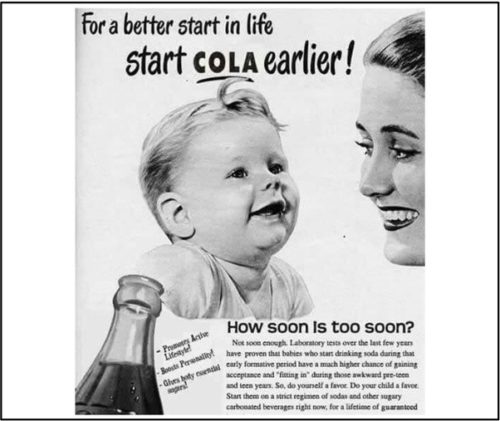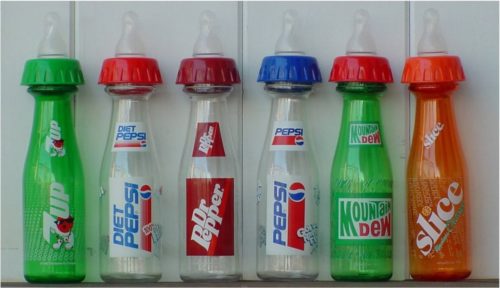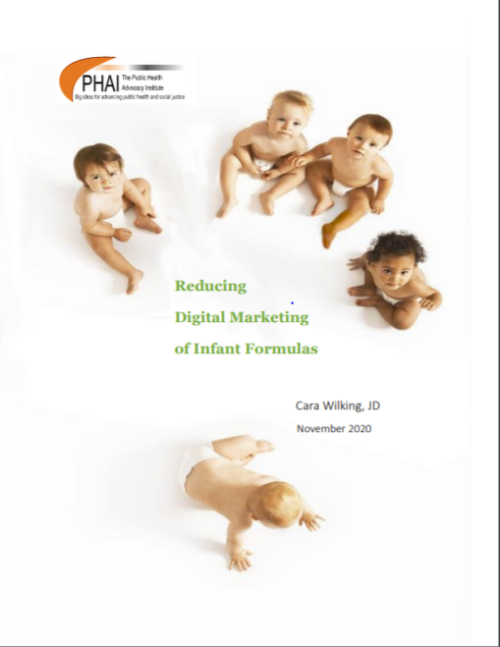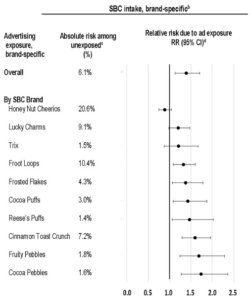The vintage Coke parody ad strikes again
A reader, Ken Kaszak, sent me a link to a post on Quora Digest featuring this “advertisement,” which I put in quotes because it is not, in fact, an actual Coca-Cola ad; it is a joke at Coca-Cola’s expense.

I know this because I wrote about it in Soda Politics. For starters, the ad says it is produced by “The Soda Pop Board,” but no such trade association exists. Here’s the page from Soda Politics.

I included a footnote that explains where this parody came from: “The origins of the Parody ad are explained by Dryznar J. Favor from clever dudes, March 4, 2004. http://jdryznar.livejournal.com/64477.html. The “Not parody” image was constructed from information from AND at www.eatright.org/corporatesponsors. The parody ad was created by RJ White, as he explains at http://rjwhite.tumblr.com/post/472668874/fact-checking. It was posted at The City Desk: Fictional Urbanism. http://thecitydesk.net/baby_soda_ad.”
Once something like this starts going around, there’s no stopping it, not least because this ad seems so plausible, given the kinds of marketing I describe in my book.
Remember these? They were for real, but fortunately are not around any more. Parents who used these bottles put in them what was on the labels.







